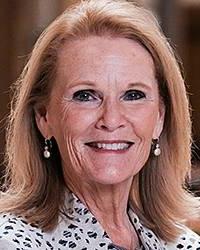Workforce 2040 report, future of work in Indiana
General
 Posted by: Steve Kimmel 3 months ago
Posted by: Steve Kimmel 3 months ago

Indianapolis-based Sagamore Institute recently released its Workforce 2040: Pathways to Prosperity report, designed to give a comprehensive look at what working in Indiana will look like in the future – a snapshot that focuses on people, technology and education.
Theresa Lubbers, who was named president of the public policy think tank in 2022, says the report was developed in similar fashion to the Workforce 2000 and Workforce 2020 initiatives in the 1980s and 90s.
“It became clear to us that the same reasons why those workforce initiatives started – and that was that there were major changes coming in the nature of work – that was again happening now, and perhaps in an even more dramatic way,” Lubbers said. “So, in order to really make sure that Hoosiers and employers were ready, we set about the task.”
Lubbers told Inside INdiana Business Host Gerry Dick the new report specifically focuses on creating pathways to prepare for the workforce of the future.
The report is organized around three key areas: the future of the workforce, the future of work, and the future of learning.
“We took all three of those areas, and not surprisingly, they are inextricably linked. One relates to the other and relates to the other, but we have specific call outs for each of those areas,” said Lubbers.
One of the key takeaways for Lubbers is an anticipated “demographic cliff,” where the state is expected to see little to no population growth moving into 2040.
“Of course, that has implications for the labor force,” she said. “You have, on the one hand, an older population in the family formation age, which you usually say is between 24 and 54; you actually have a smaller population going there. So, you have fewer people working. You have higher needs for the elderly population. So, we need to be prepared for that.”
The report also looks at the growing impact of technology transformations – including in artificial intelligence, robots and biology – which Lubbers said will influence every sphere of the economy.
“What you have to do is really look at the challenges and opportunities and also prepare for the downside of that,” she said. “Yes, there will be jobs that are eliminated, and that’s why part of this whole focus that we’ve had is, how do we make sure we’re not leaving people behind in the way that we did when the auto industry went south in the second half of the 20th century?”
Lubbers said the state needs to continue to prepare workers to be resilient and reskill them so they are ready when their jobs change. That, she said, can help deal with some of the anxiety of the changing outlook of work.
A former higher education commissioner in Indiana, Lubbers said it’s important also to ensure that these efforts are being made for all and not for some.
“If we don’t, in fact, skill and reskill people in the right ways, it could drive income disparity and social stratification even more. That’s not acceptable,” she said. “We have to make sure that we are preparing people early and as those jobs change, we’re reskilling them to go along with the changes in the job roles.”
You can connect to the full Workforce 2040: Pathways Report.
Categories:
About: Steve Kimmel
You May Be Interested In:
Take Your Business to the Next Level
Call the Chamber and see how we can help you take your business to the next level. You can become an Ambassador, volunteer for our golf outing, attend one of our networking group meetings and more. Keep this site close by for all the happenings in Huntington County.


